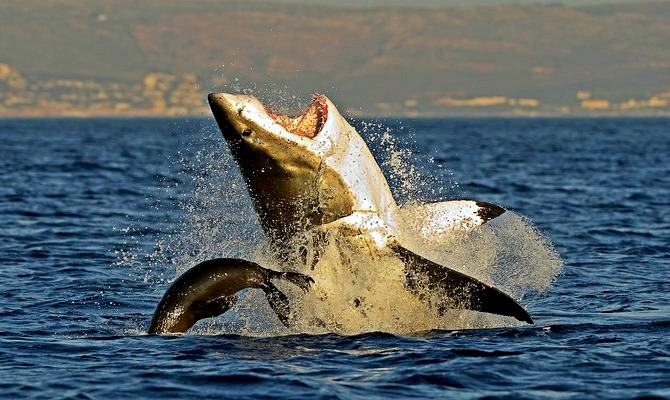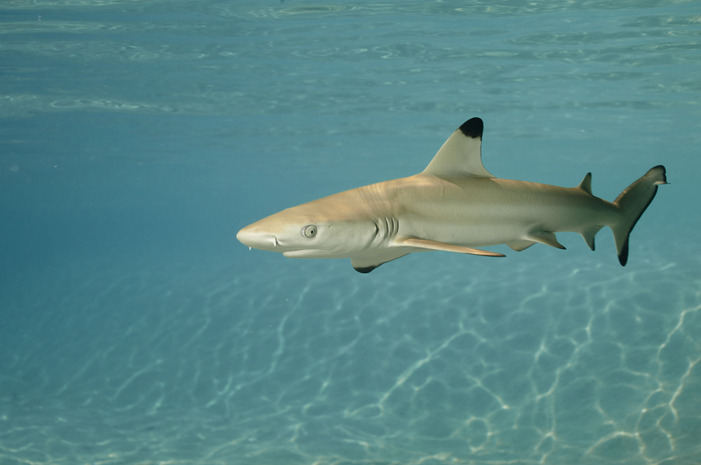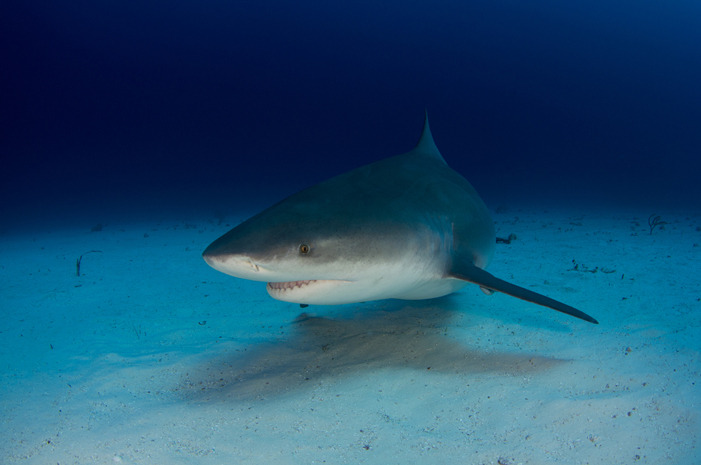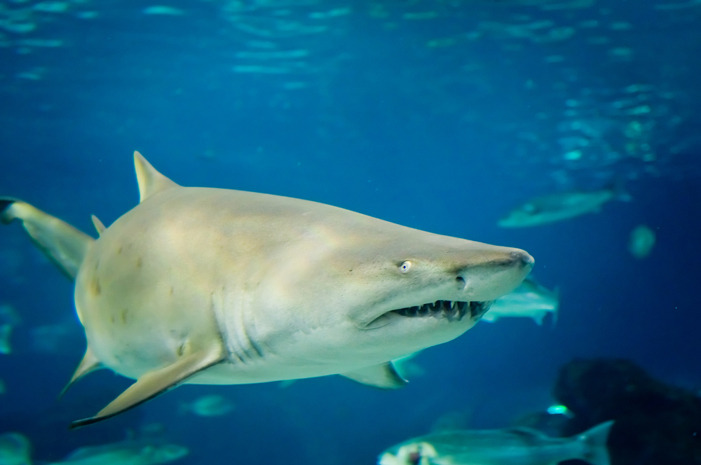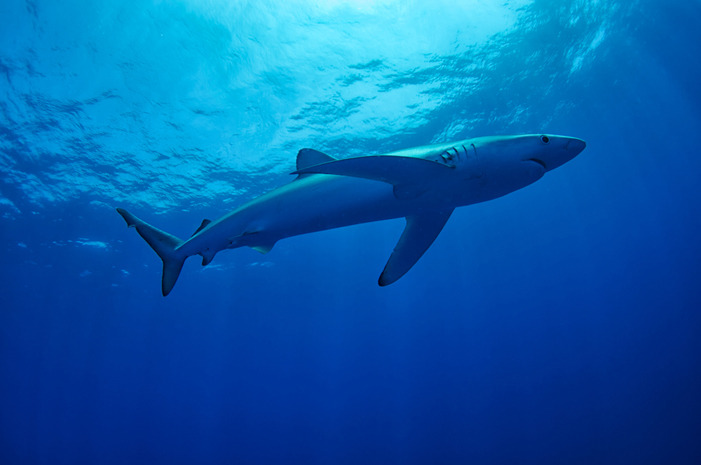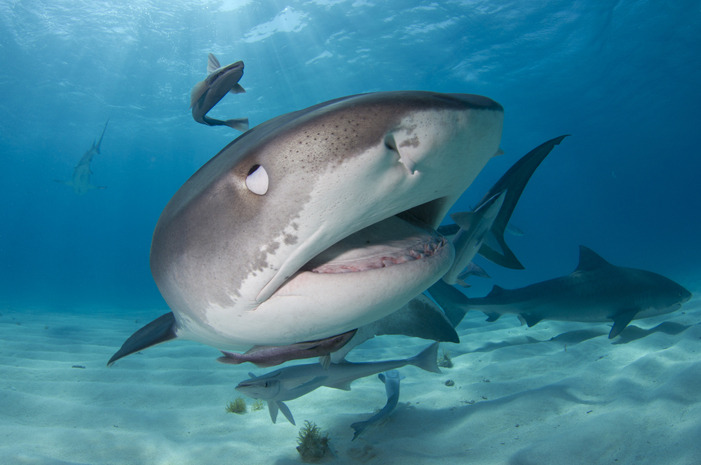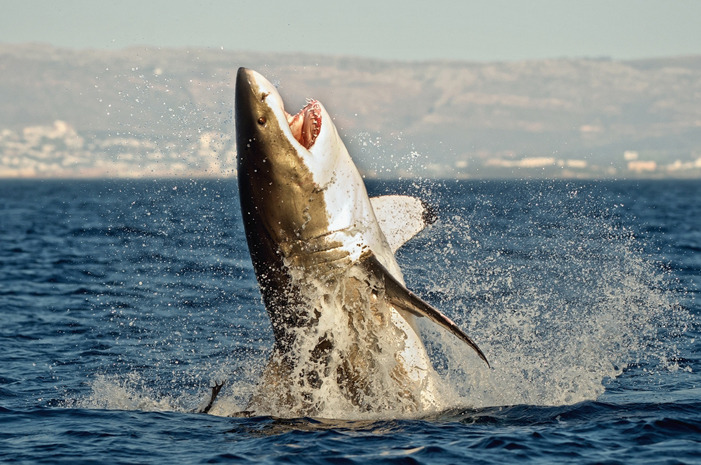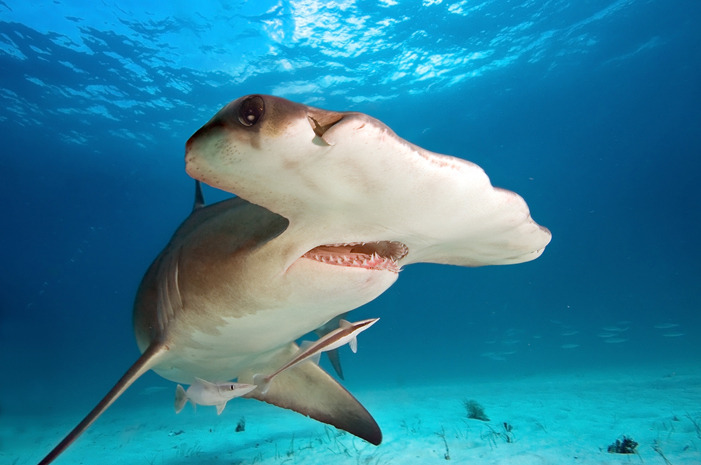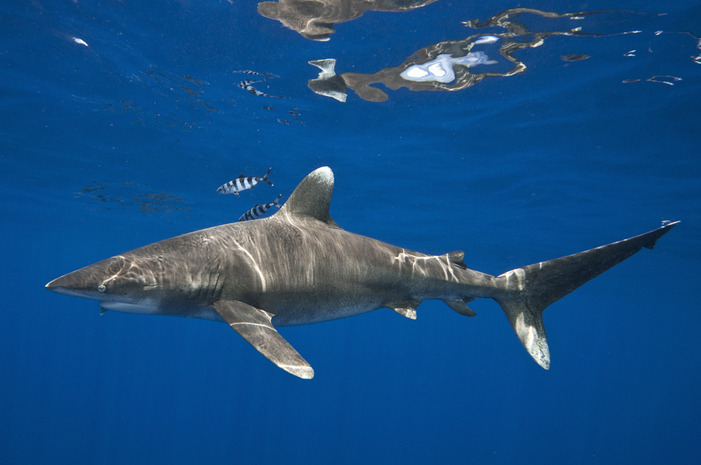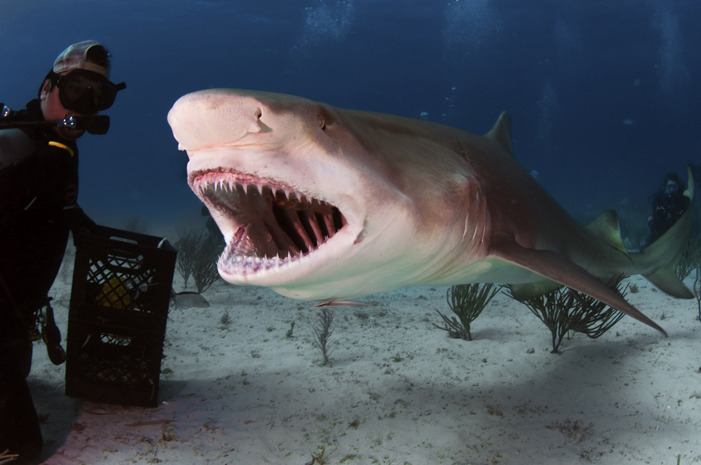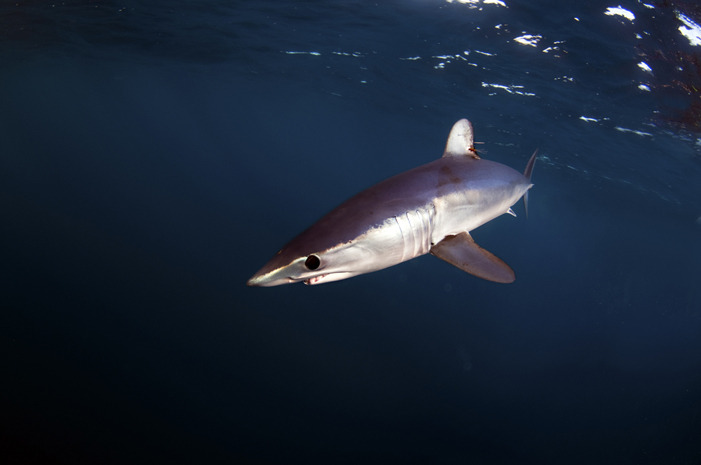The World's Deadliest Sharks
1. Blacktip Shark
The blacktip shark is often found in shallow waters off beaches and they love to stay around coral reefs. Watch out in coastal tropical waters around the world. You may see the blacktip shark leap out of the water and spin three times; this is a sign they are feeding! Although fish make up the majority of their diet, blacktip sharks have been known to snoop around divers.
2. Bull Shark
Be careful, the bull shark is common in both saltwater and freshwater! Bull sharks may just be the most dangerous of the entire shark species. They are usually found off the coast of Florida and there have been numerous cases where humans were both killed and injured. Other than humans, bull sharks feed off of other sharks and bony fish. Fun fact: Bull sharks can give birth to four to ten live young at a time.
3. Sand Tiger Shark
Sand tiger sharks like to stay in the waters of South Africa, Japan, Australia and the Mediterranean. They can weigh up to 350 pounds and are usually found hovering above caves during the day. At night, it is hunting time. Sand tiger sharks are usually provoked to attack humans when they are participating in spear or line fishing. Fun fact: The sand tiger shark is the cousin of the great white shark!
4. Blue Shark
Blue sharks are extremely fast, they love to prey on squid and lobster. There are times when you may even see one of them leap out of the water. However, it is said, we humans kill more blue sharks than they kill us! Yes, there have been instances where blue sharks have attacked humans, but when humans are fishing we are more likely to kill one of them first.
5. Tiger Shark
Tiger sharks are found close to the coast in tropical waters. They like to stay in deep waters, but seek prey in shallow water. It is said that tiger sharks like to eat literally everything, and they eat their prey whole! Tiger sharks are responsible for numerous attacks on humans, most of these attacks lead to fatalities. Fun fact: Tiger sharks develop for up to 16 months in their mother's body until they are ready to come out.
6. Great White Shark
The great white shark is also known as... white death. Great white sharks are responsible for the greatest number of recorded shark attacks on humans. They have attacked boats, sinking them, and then attacking the people falling overboard. Fun fact: You can go cage diving in South Africa and see great white sharks up close.
7. Hammerhead Shark
Hammerhead Sharks get their name because of their flat head. Feeding off of stingrays, fish and squid, they are known to do the majority of their hunting at night. There are 10 known species of the hammerhead shark, three of which are dangerous to humans. Be careful in warm waters along the coastline, hammerhead sharks are very likely to attack you. Fact: Great hammerhead sharks are extremely aggressive; there are cases where they get so hungry they actually eat their own young.
8. Oceanic Whitetip Shark
The oceanic whitetip shark is also known as the Silvertip shark. They are extremely aggressive and pose great danger to humans. They like to stay right near the top of the water and scan for food. They cause concern for boats floating in the water; the whitetip shark has been the cause of numerous shipwrecks around the world, ultimately resulting in the deaths of sailors.
9. Lemon Shark
The lemon shark is usually found in subtropical waters. They have a yellow coloring layer around them that camouflages them in with the sand. That being said, the lemon shark likes to bite humans, they may be right below you, but you just can't see them! They like to travel with one another in groups. Fact: The lemon shark has electroreceptors on their heads that detect potential prey. This makes it easier for them to find their prey in the dark.
10. Shortfin Mako Shark
The shortfin mako shark is known to be one of the largest and the fastest species of sharks. It can literally speed up to about 46 mph. There have been numerous human attacks, along with many boat attacks. Fact: Female mako sharks rest for 18 months after they give birth, then go right back to mating again. They can give birth to four to 18 live young at one time.
